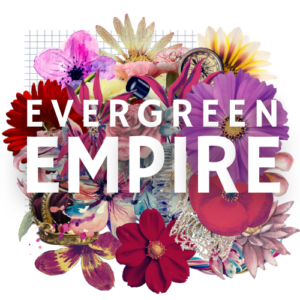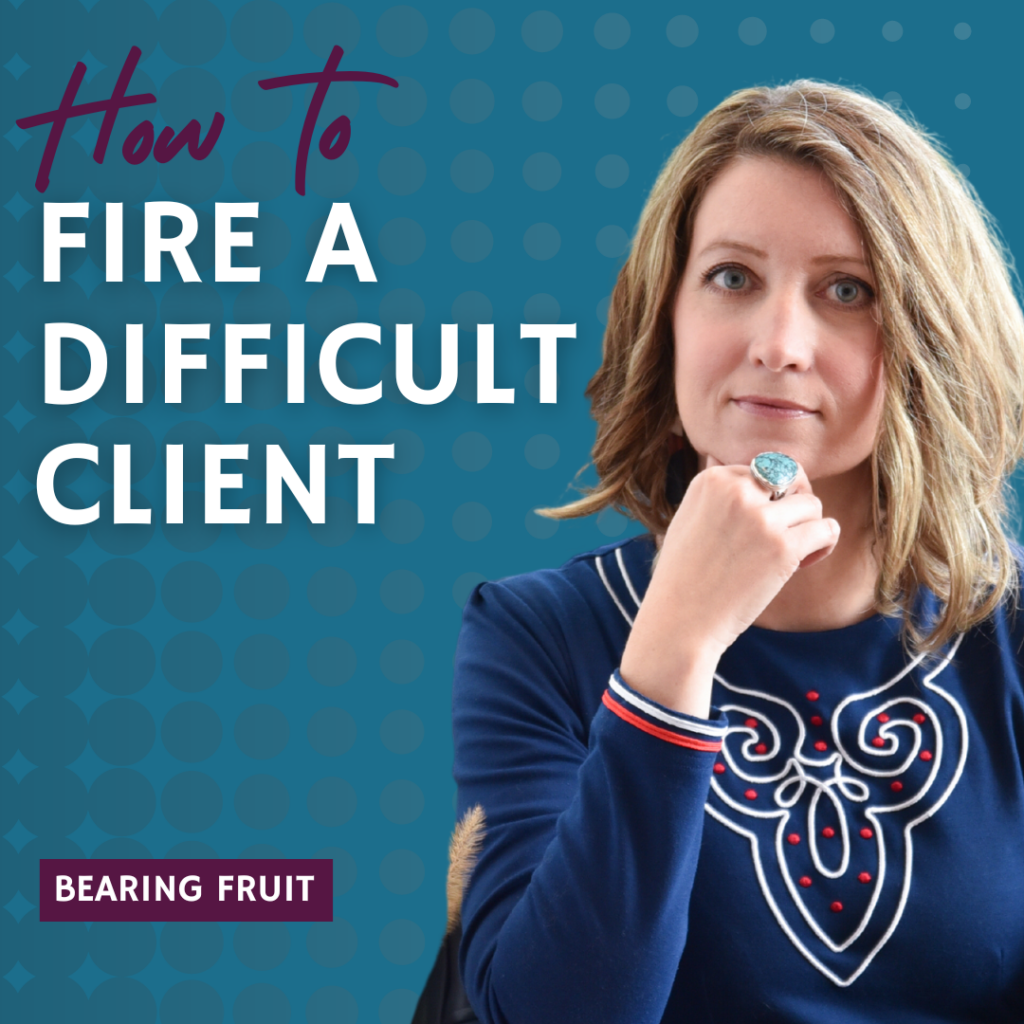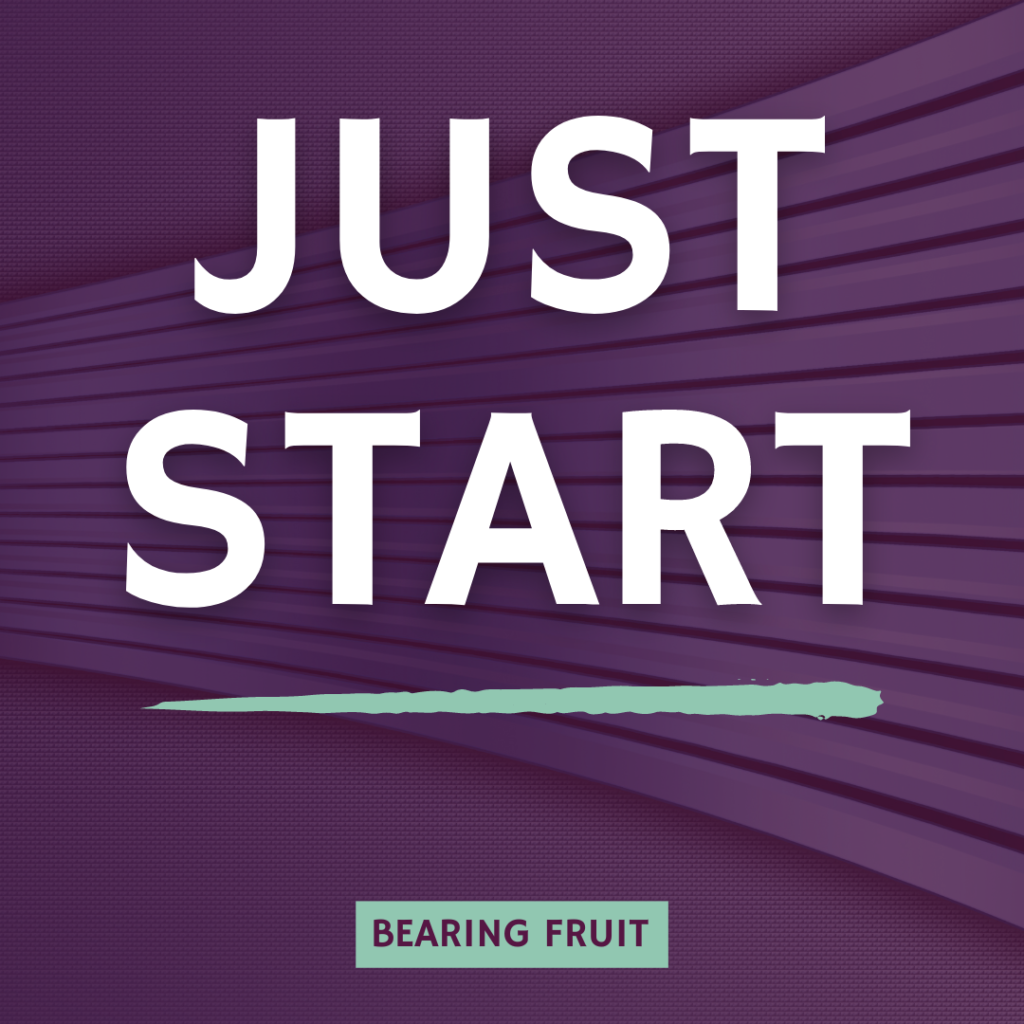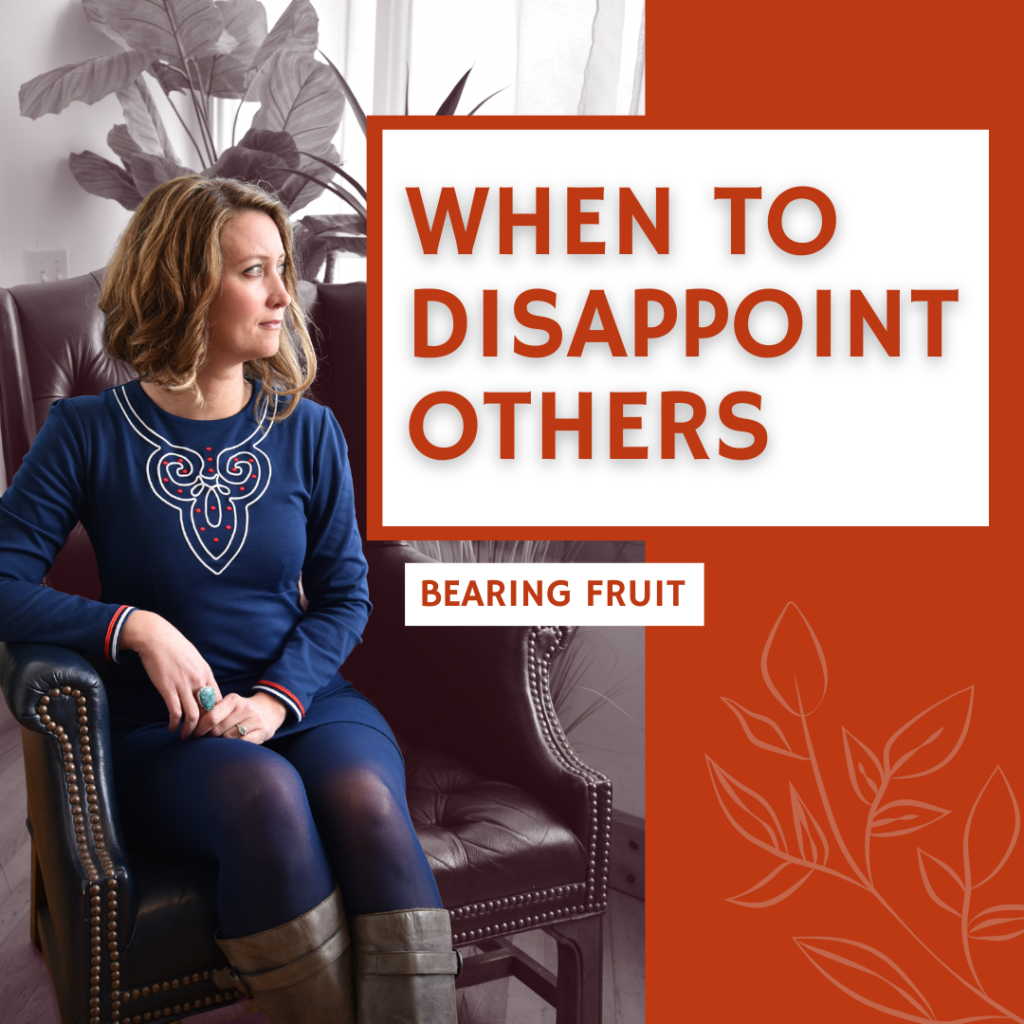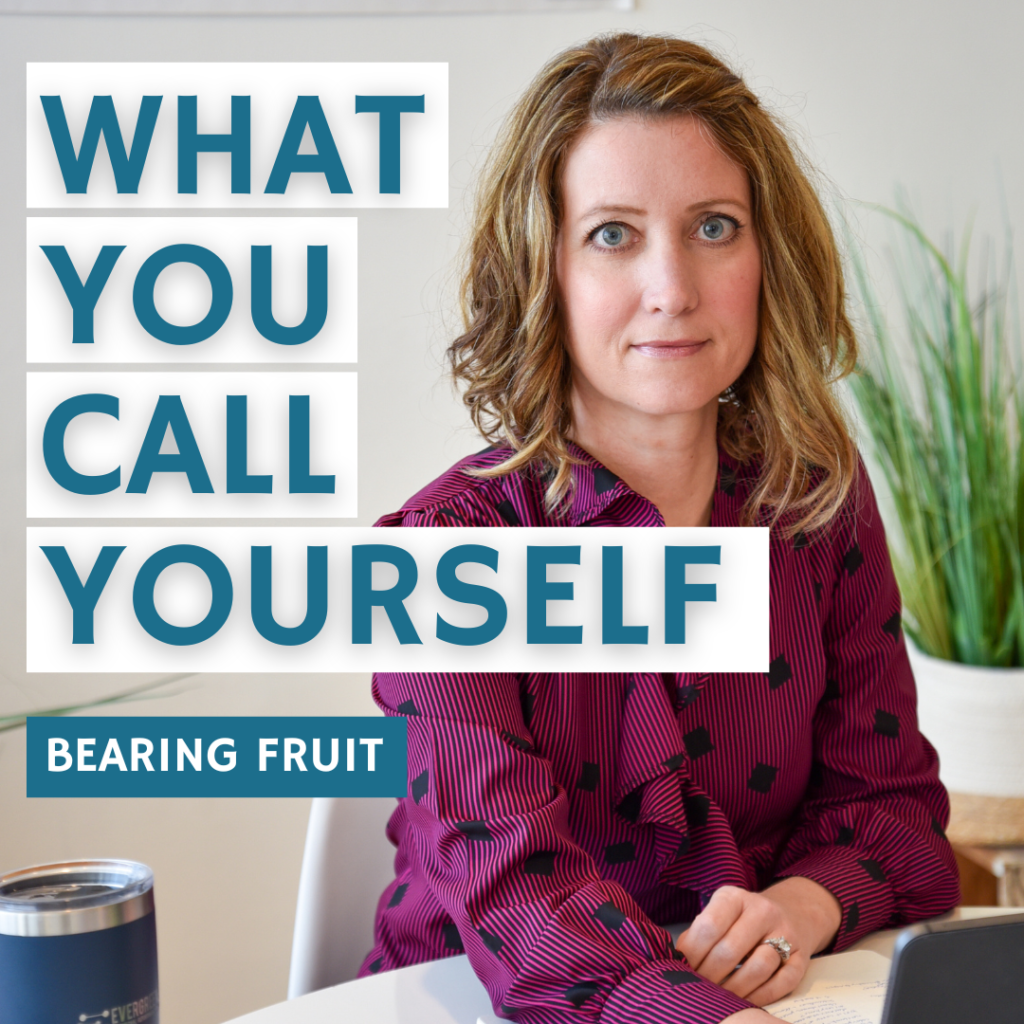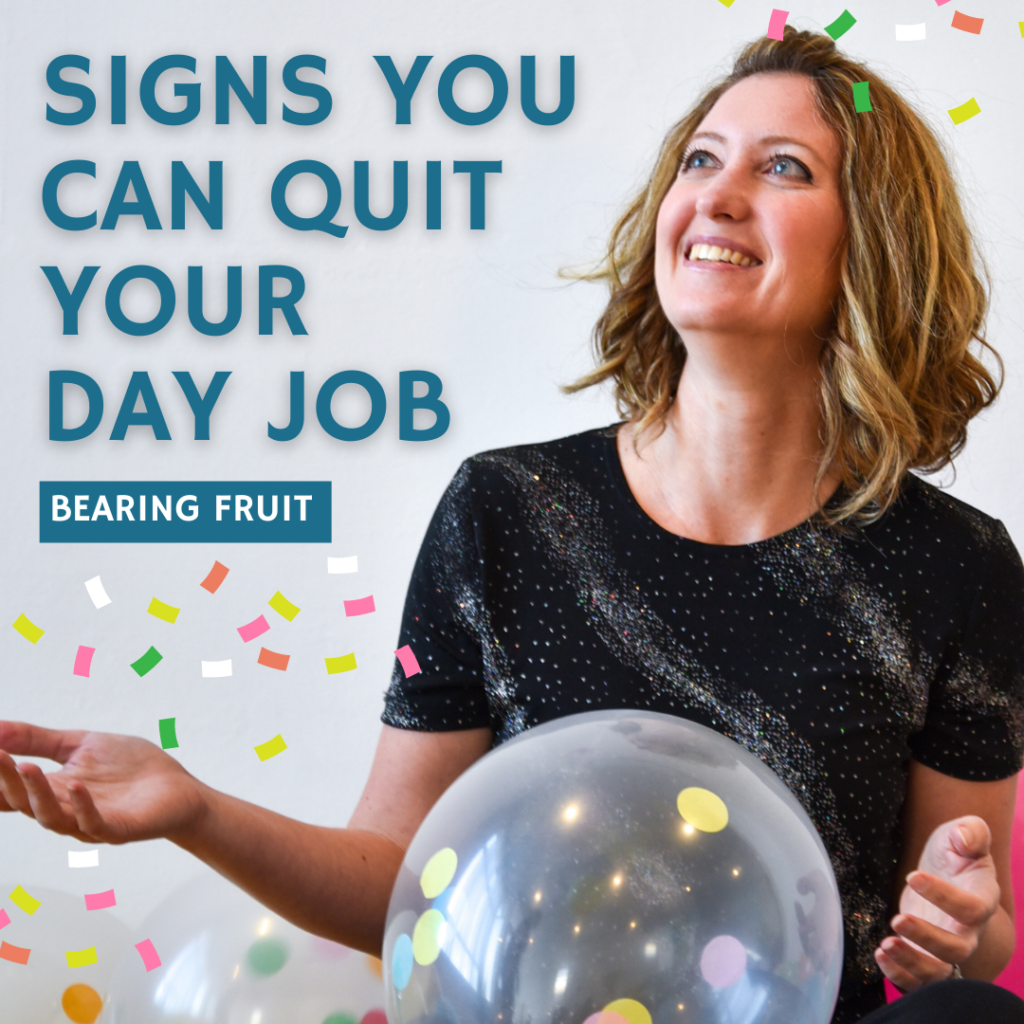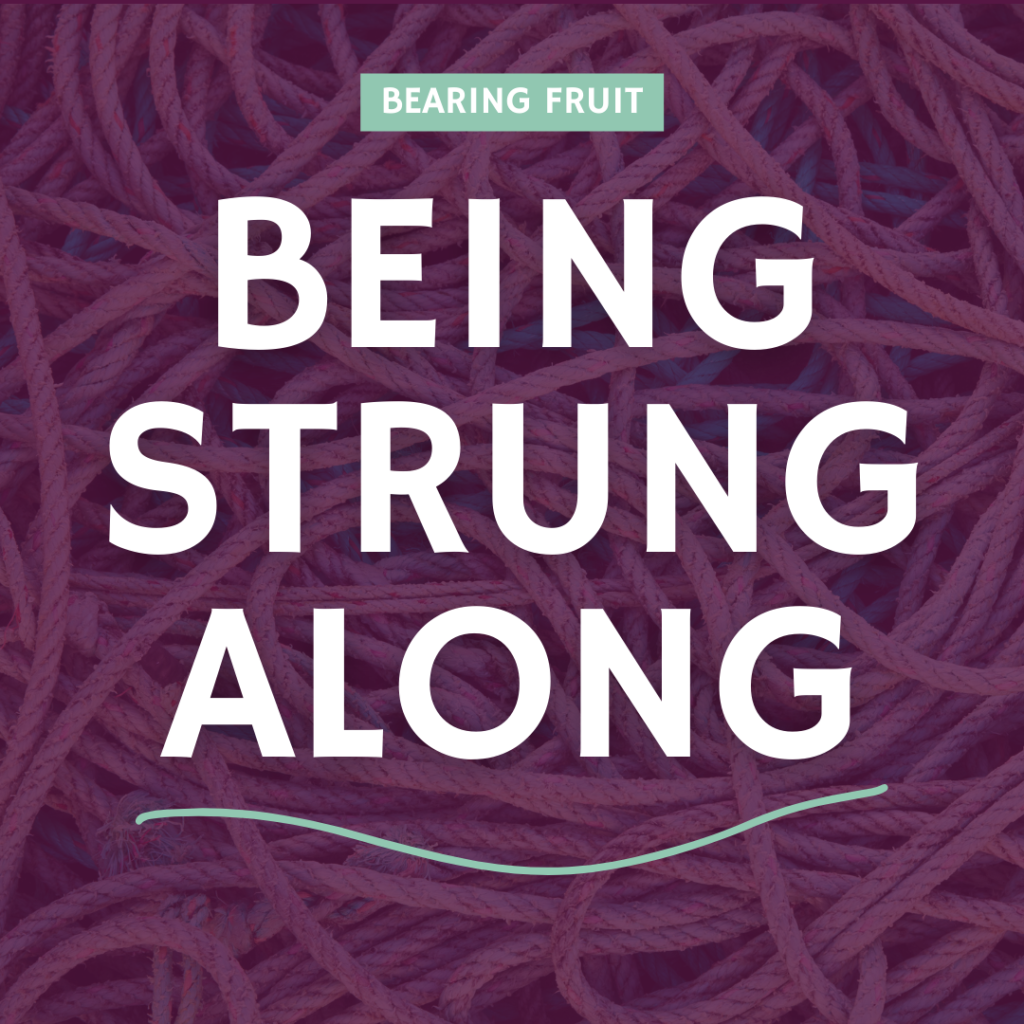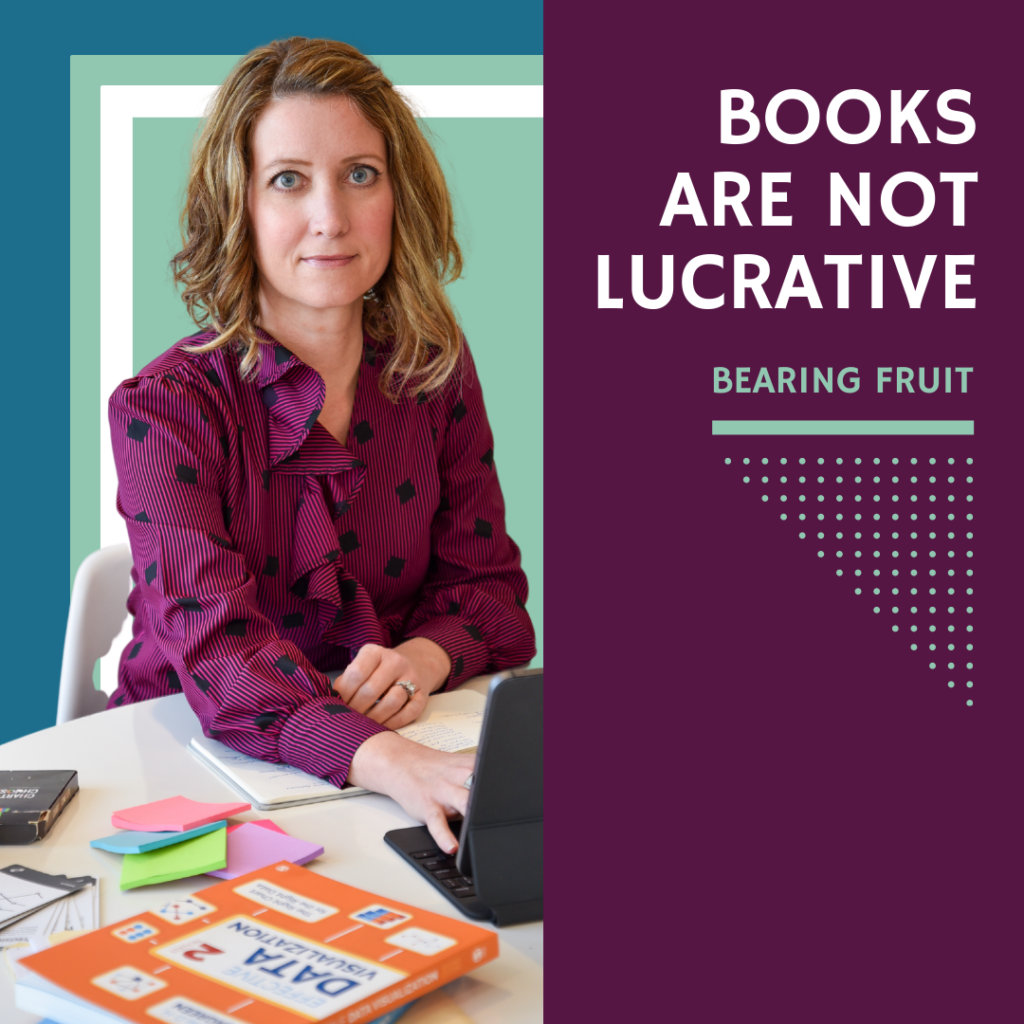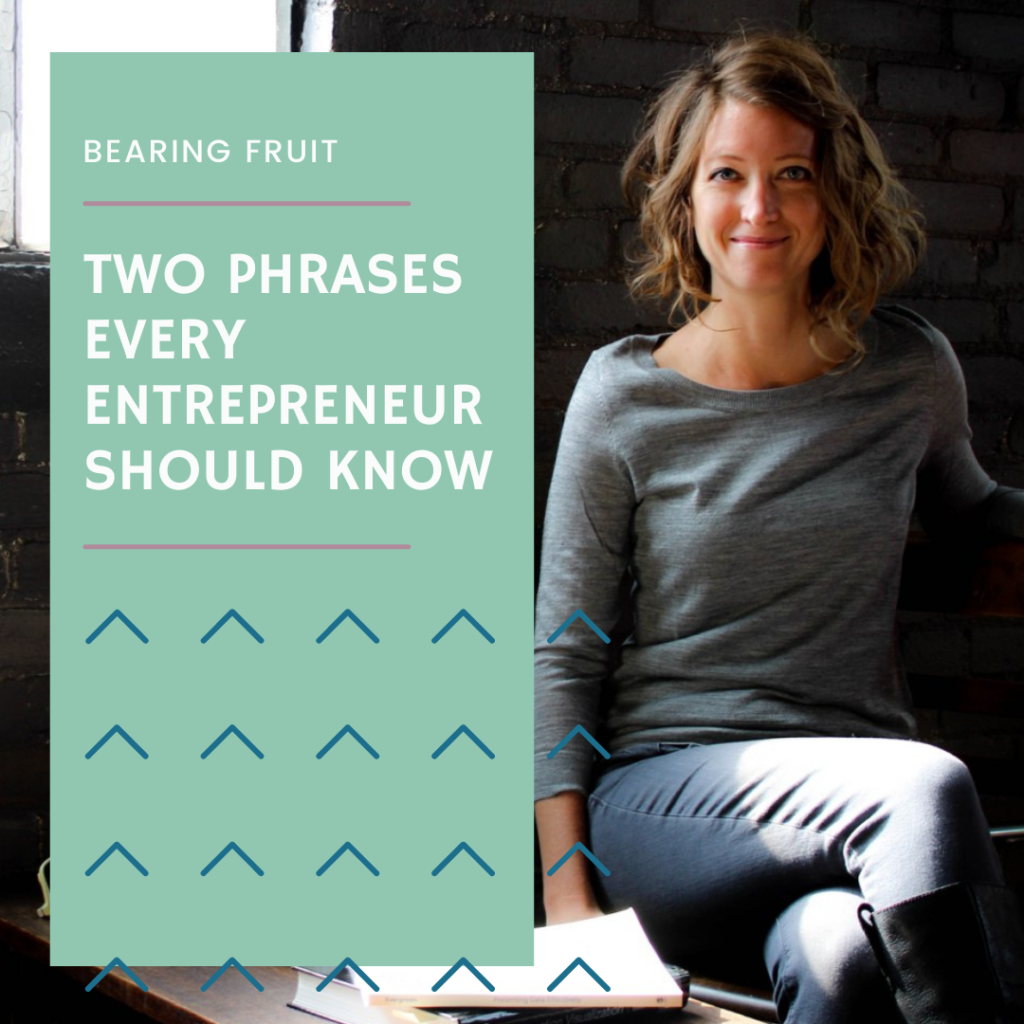Your Limit is Five Projects
Breaking News: You can only handle 5 projects at a time.
New research out of University of Liverpool reports on analysis of 9,649 data points and it’s showing that when you get beyond 5 projects, you start to lose your mind and burn out.
Isn’t that incredibly helpful information?
Or am I the only one that finds comfort in being data-driven?
5 projects at a time. That’s it.
So here’s how I’m using this idea to plan for an ever calmer, more sustainable 2023.
As usual, I made my grid for the year, blocking out each month in a 6 x 2 matrix so I can plot out my projects and anticipated income.
In previous years, I’d just cram each month’s square with all the projects I committed to and their associated revenue so I could track my monthly dollars and see the balance of my work across the year, on one page. Helpful, to be sure.
But this time around I made an adjustment: Each month is now a numbered list, 1 to 5.
Each workshop I book will fill one spot. Each consultancy. When the 1-5 has been filled for a month, I make a little x to show it’s full. Then I tell clients “Oh sorry, May is booked. My next opening is in June.”
And when I can see the whole year like this, I can also plot out unpaid events I know I’ll have.
For example, here’s my Fall 2023:
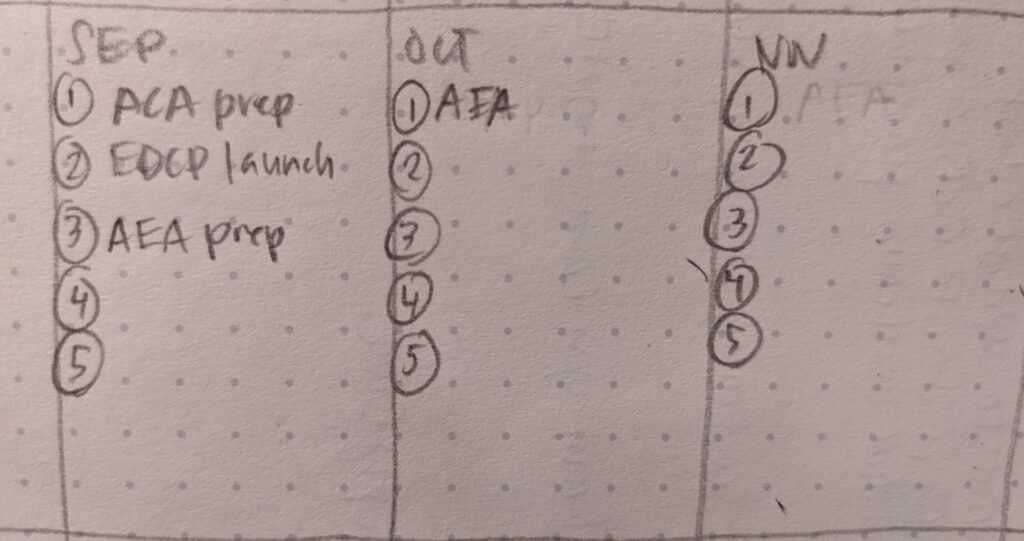
Usually my massive conference is held in November, where I market and network and make new friends and clients and hug all my people. It’s the best.
It’s also a whole project. It typically takes up one spot for November.
But next year they’ve moved it to October.
Which means my prep will happen in September, when I’m getting my talks together and planning the parties I’ll host at the conference. Whew.
September is the same time I’m launching a course and prepping for the launch of another course.
Now I can look at September and recognize, months in advance, that I won’t have much time for paid work. I won’t overbook my September because I can only do 5 things and massive conference prep is definitely one of those things.
This means, if I’m following the 5 projects philosophy, that I have to take on one less paid project in September, in order to plan for one less paid project in October.
Gosh, that conference starts to take on a different sized budget.
Better make sure I’m working my ass off to get the most out of that conference experience.
The holidays take up one spot in December. Not even work-related but it takes up a whole spot. Because the more I thought about this five project limit, the more I realized it isn’t just about work.
Got a fresh baby? That’s one or two spots on every month until your kid is 3.
Dealing with an aging parent? Fill in a spot. Or three.
Old Stephanie would have scoffed a bit at this research. Like “oh yeah the average person can only handle 5 projects, but me? I’m freakin good at this. Bring it on.”
Old Stephanie burned out. Repeatedly.
Health is recognizing the limits of our capacity.
We can put a lot of pressure on ourselves (and each other) to be more, achieve more, ever ever more more. And even if we have wised up to the fact that ever more isn’t sustainable, you’re just left wondering, well, what is?
It’s five.
Now we know.
Ok, ok. One research study isn’t enough to warrant such strong words like knowing something.
But I’m going to run with this framework for a year and see how I feel.
Conversely, some students in Boost and Bloom, who are just starting out on their own, are struggling to juggle more than one project at a time. Like, your brain hyperfocuses on making sure this one project doesn’t go off the rails.
Let this research be an encouragement to diversify your portfolio a little.
Small projects count. The researchers point out that part of the burnout comes from the administrative time and energy to run a project, no matter its size, and the task-switching between projects that sucks your brain.
So for people who only have one project in their laser beam and need to broaden their scope, small projects count.
And for people, like me, who need to rein it in and lower their project number, small projects count.
May we see this restraint as freeing.
In January, my 5 will be:
- A two-day workshop with National Science Foundation
- Dashboard development work with the City of Chicago
- Coordination of a workshop with one of my staff for Centers for Disease Control and Prevention
- Prepping for the re-launch of my one-on-one data viz coaching program, opening in March
- Final prep for re-opening Boost and Bloom (I’m so excited!)
What are your five? Email them to me.
How to Fire a Difficult Client
The first time I had to fire a difficult client, my pits sweated right through my shirt as I was composing, backspacing, and rewording that email.
Look, we’re gonna to do our best to make sure we don’t ever end up in this position, but sometimes you have to fire a difficult client.
I encourage you to do this at the second sign of inappropriate behavior. For the most part, I’ll give people grace on their first asshole comment, late payment, or questionable Zoom background.
But the second time?
Cut your losses and get out.
You don’t necessarily even need to have a clear egregious error. Sometimes you just drift apart. You’ve got a 5 year contract and 2 years in you’ve decided you want to shift your business focus.
Instead of providing a full suite of graphic design services, you’re pivoting into the niche of writing each wedding guest’s name in calligraphy on individual grains of rice that they’ll chuck at the happy couple. Totally cool.
Pivots happen all the time.
The bottom line is don’t do this:
Even if you really really really want to.
When you recognize it’s time to part ways your first stop is your contract. Whip that baby out.
It’s gonna have a section on cancellation. The most common clause I see says that the contract can be cancelled by either party with 30 days’ notice.
Ok, cool.
Email your client and say… whatever you want. But not too much. Unless you want to.
Crystal clear?
My point is you aren’t obligated to say much but if you’ve had a good relationship and want to preserve it, you can provide some detail.
How to fire a difficult client:
You can be as efficient as “Hey there – It breaks my heart to do this but I need to sever our partnership. Our contract asks for 30 days’ notice – please consider this the notice. I’ll continue to give my best on this project in that time and I have someone in mind I’d like to transition you to if you want a recommendation.”
You don’t have to mention calligraphy on wedding rice.
You also don’t need to provide a recommendation if your client is a jerk. Because the colleague you’re recommending doesn’t deserve that behavior either.
If they’ve specifically breached the contract in some way, you don’t have to wait the 30 days either. You just need to point to that clause in the contract, like “Todd, when you commented on the size of my butt at last week’s meeting, it was a breach of the sexual harassment clause of the contract, which is cause for immediate cancellation. I’ll be sending my final invoice over shortly.”
I’ve been in less clear situations where I had to say something like “The ongoing reshuffling of my scope and responsibilities is making it impossible for me to fulfill the obligations laid out in our contract. Further, I need to be able to trust a partnership – that’s how we plan out our business strategy. This partnership is not working for our business model any more.”
Copy/paste these as much as you need.
Take a deep breath and hit send.
And if you’ve loved these folks, consider shipping them a parting gift of wedding rice.
Do not forget to send the final invoice.
Sometimes we don’t review our contracts very carefully before signing and end up agreeing to a clause that’s less fair, like one that says only your client is allowed to cancel. If that’s you, still try one of these options listed above. Chances are that once you convey that you’re unhappy, they’ll also want to part ways.
If you’re screening your prospective clients well, firing a difficult client will be rare (so bookmark this page for when you need it). I have to do it once every other year.
When it happens to you, it sucks but I’m here for ya. Email me and tell me what happened and how they reacted. We’ll get through it together.
Just Start
I’m gonna pre-apologize right now. Cause this post from Sun Yi’s Instagram is so accurate, it hurts.

Let’s say I want to buy a house in Portugal. It’s been a lifelong dream and I finally feel like I’m in a place in my life where it could reasonably happen soon.
I’m absolutely not jumping on a plane and flying to Lisbon and buying the first house I see.
I’m going to read up on the rules of international house buying. Join an online ex pat community and listen in for advice on fun neighborhoods. Talk to my family.
Then – and this is THE MOST IMPORTANT PART – I’m going to start a conversation with a real estate agent in Porto. That’s when it gets real. And that’s the step we put off.
Because there’s always more research to be done. Another influencer with the one tiny tip that’ll make or break you – better keep scrolling. Right?
Honey, you’ll scroll your whole life away.
The difference between being a wantrepreneur and an entrepreneur is in the balance you strike between researching and doing.
Stop researching and go get a client.
How?
How does anyone get clients? You sell yourself. Talk about your work. Reach out to people who need your services.
That’s when it gets real.
Real scary.
“I want to be an entrepreneur, but I’m scared it won’t work. I’m scared I can’t do it.”
For reals. Those are true legitimate feelings that don’t fully go away, ever. It IS scary.
Now that we’ve settled that, can you view fear as that annoying colleague down the hall and just do your work anyway? Todd in Accounting as been training you for this for years.
There’s just no other way around it. Put yourself out there and focus on getting clients first. You’ll figure out everything else as you go.
“I don’t know what steps are involved – better read yet another CEO’s book.”
Everyone’s path is going to look differently but the one thing you can trust is that, once you start walking, the next step will be revealed to you.
I had just a couple clients under my belt when a prospective and I were emailing back and forth and she said “This sounds great. Do you have a website I can show to my team members?”
No ma’am I do not. But I’ll have one up tomorrow.
The next step shows up at your feet if you just get started.
You build it as you fly.
“I need a lot more experience first.”
Um, how do you think you get experience? You have to go get clients.
You might be thinking, who wants to work with someone so new? You wouldn’t want a surgeon on their first surgery, would you?
I don’t know about that. The best cleaning I ever got was from a dental hygienist who had just graduated. She was well-researched – no one could know more about the most current best practices. And her freshness made her sooooooo careful and detailed.
Listen, your experience will perfectly match someone’s budget. Just go find your someone.
So yes, of course, you need to do some research. But instead of thinking that there’s a research phase and then a doing phase, think about researching and doing simultaneously, back and forth, onward. Both at the same time.
If you want to actually reach those big dreams – that house in Portugal, that business empire, that award-winning YouTube channel – you have to switch to DO mode. Contact the real estate agent, connect to your first client, make your initial video.
Yeah, the first one will suck. So get it out of the way as fast as you can.
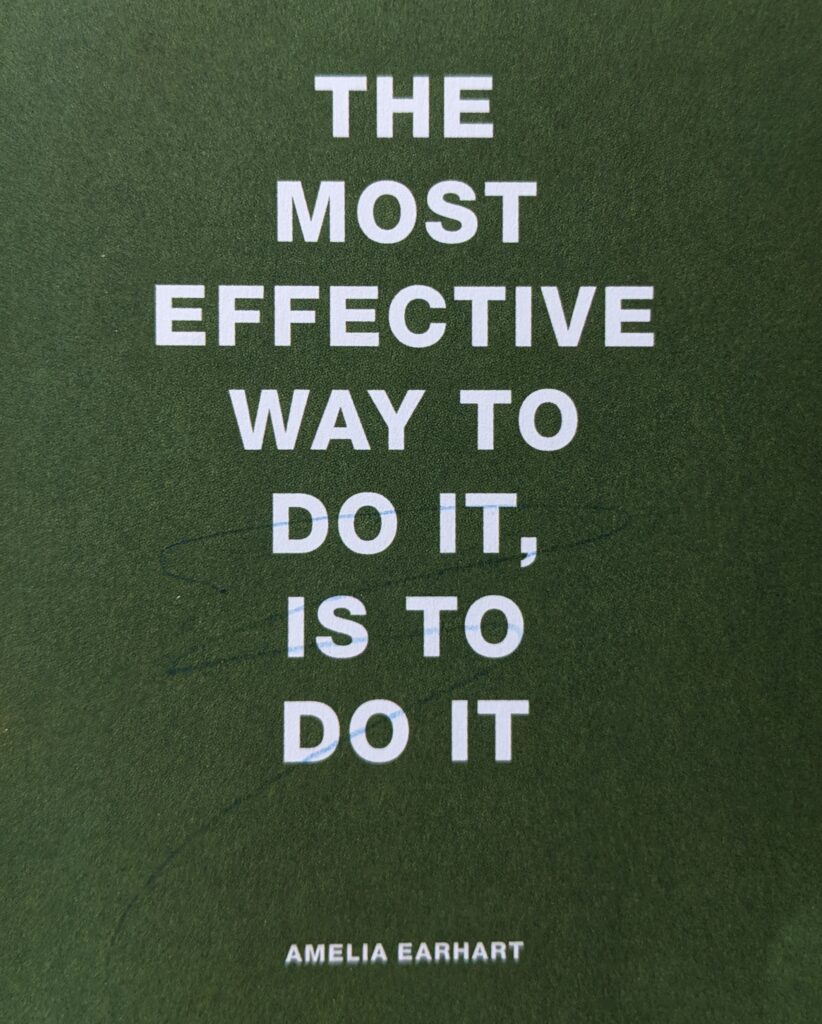
So, what’s the next big thing you want to do? The thing you’ve had your heart on but haven’t actually *done* yet? Hit me up for a little pep talk.
When to Disappoint Others
Here’s a story about first time I got a gig through LinkedIn.
Jennifer worked at a ~~ prestige beauty company ~~ and needed a consultant to revamp the 100-slide PowerPoint about the state of the prestige beauty industry for their upcoming conference.
I said yes, even though (1) the deadline was tiiiiiight, (2) I don’t really love doing this kind of design work, and (3) I don’t know jack about the prestige beauty industry.
The pay was structured as a flat dollar amount per completed slide.
Jennifer sent me the deck from last year that “just needed to be updated” (famous last words).
Each slide had at least 100 different elements on it – dozens of textboxes in 4 point font, photos arrays of expensive neck creams. I very quickly saw that the reasonable dollar amount per slide was going to equate to far under minimum wage, with all the work it would take to redesign even a single slide.
I spent a whole weekend in my office, cranking out remakes according to what I knew to be best practices for slide design.
Sent it off to Jennifer Sunday night.
She freakin hated it.
Her email was something like “this is not prestige, this is not elegant, this is not beautiful.”
That hit me like a gut punch.
I took another shot at it, still without any real idea of what prestige, elegant, and beautiful would look like to Jennifer.
I’m sure I fell short. I sent off the next draft, which, at this point, was like the day before the conference. I never heard from Jennifer again, despite my follow up emails.
I had disappointed her.
The right time to disappoint her would have been back when she slid into my LinkedIn DMs. I should have said no. The project wasn’t a good fit. The answer should have been simple.
Or, I could have asked for a sample slide so I could get a sense of the scope of the work. I woulda opened the sample slide, laughed out loud in my office, then politely declined the job – disappointing her.
What do those two opportunities have in common?
They come before the contract is signed.
The best time to disappoint someone is before you sign official paperwork.
We risk damaging our reputation and wasting everyone’s time and energy when we don’t engage in a thorough discovery phase before we ink signatures.
In order to honestly engage in a discovery phase, you’ve gotta know what work you will and won’t do. What lights you up and what’ll be a slog. Who you love to work for and who you don’t need to support.
Those distinctions are blurry at best when we’re desperate for work or flattered by the ask.
You need clarity about your focus and purpose to enter into a discovery phase. (You also need a list of client red flags to look for.)
Most of us skirt this. Because we want to “remain open to new opportunities.”
But clarity about your focus and purpose brings you strength and confidence.
You might think, what’s the harm? You only lost one weekend of your life saying yes to Jennifer.
Not so, my friend. I lost my time, my energy, and I risked my reputation. And as an entrepreneur, time, energy, and reputation are all you’ve got.
So now I know better. I asked for a sample to get a sense of the scope. It’s part of my discovery process.
Let’s trade stories. How did you disappoint a client, after the contract was signed? And what changes have you made to your discovery phase as a result? Shoot me an email.
What You Call Yourself
In my early entrepreneur days, I looked up to Amy. She owned a thriving one-person consulting business, seemed in a happy relationship, had her shit together. I needed to be like Amy.
So one day I emailed her and asked the super important question: What title do you use?
And here’s what she said back: Principal.
Me: Principal?
Amy: Yep. That’s the official name for someone who owns an LLC.
Me: …
Honey, I come from an education background, so, to me, Principal means a specific person who smiles a lot but is actually judging the way you dismiss your kids to recess.
Even if I switch contexts to entreprenuerism… Principal? There’s no pride in that.
Then I remembered that dear sweet Amy also uses the word “persons” to refer to people. Like, persons of color.
Listen, in some ways, it doesn’t matter what you call yourself.
Pick anything.
Don’t let this part stop you from moving ahead.
On the other hand, what you call yourself can bring you a sense of accomplishment and confidence. It matters.
I tried on Principal for about two months and quickly switched to Owner.
Then **Founder** cause that sounded so much cooler. And accurate. I don’t just own this company, I created it from the ground up.
But Founder started to feel too limited. It didn’t adequately describe what I do, only what I did.
I went through a cheeky phase where I switched seamlessly back and forth between a couple different titles: “The One and Only” and “Heavy Hitter.” I mean, what title could possibly encompass all that I am and all that my business does? Might as well go big.
Heavy Hitter got attention. Prospective clients would message me on LinkedIn with compliments on the chutzpah behind that title. Damn right.
Instant swagger.
Ok but then I was signing contracts with Fortune 500s with the title Heavy Hitter. I felt like I was just three 12 year olds stacked up inside a trench coat trying to pass as an adult.
Now I sign contracts with CEO right under my name. CEO. That’s what an official adult would call herself on formal paperwork.
On social, I switch up my titles from time to time. Usually, this is a strategic move to focus on whatever initiative I’m promoting at the moment. Like when I open up the Data Viz Academy twice a year. During those times, my title is “Founder, Evergreen Data Visualization Academy.”
Your title can change depending on your current marketing strategy.
You aren’t limited to one title.
I just politely request that you don’t call yourself freelancer.
So, hey, what are you calling yourself right now? Drop me an email with your current title.
Staff job titles are also important.
So before we wrap, let’s address this too.
The positions you create in your company aren’t just for you. They’ll be fulfilled by humans who will need to know what to call themselves, too. Humans who will at some point look for other employment and will list their role in your company on their resume.
The name of the role on their resume will be a factor in the salary the next company offers to this lovely human who worked for you.
A person with “Senior Research Associate” is going to get a higher initial offer than someone with “Junior Associate” or just “Staff” (because you never gave them a title).
It’s a revolutionary act in this world to create titles that accurately reflect the skill and experience the position requires such that your staff person is on the best footing possible when they leave. Doubly important for people of color and white women who have historically been underpaid, undervalued, and underpromoted.
Everyone at Evergreen Data is a Senior something.
Titles are a big deal. And also a small deal. Change it as much as you want.
Signs You Can Quit Your Day Job
THE LEAP! The leap feels so big. Quitting your day job to launch your own empire is full of so much anxiety, fear, curiosity, hope, and thrill.
Most of us aren’t equipped to sort through that many emotions, all happening at the same time. It’s like the Jungle Juice from your college years. And most of us weren’t equipped to handle that either.
So, while there’s no one path to entrepreneurship, let me help you sort out when you’ll know you’re ready to take that leap.
Money & Insurance
The biggest burning questions I get in my DMs are fears about money and insurance.
If you’re in the position to stay in position, do it. By that I mean, if you’re able to stay in your day job while you grow your empire on the side, that’s the most stable situation. Yes, it’ll mean you’re sacrificing some nights and weekends but if you’re just rewatching Breaking Bad again, you won’t lose much.
When you’re earning 75% of your day job salary through your side empire, you’re in a position to walk.
I mean, I walked without having much lined up. People do it all the time. But ideally you’ve built enough of a bridge to make the leap more like a hop.
You only need to get 75% of your salary covered because once you take the leap you’ll have a lot more time on your hands for business development to get you to 100% +.
The + also includes covering your insurance, which is probably the #1 block for people in the US who have to suffer through employer-based insurance programs. It’ll become a cost of doing business. You can handle it. But now’s the time to research how much you’ll be paying and add this cost to the list of expenses you’ll incur regularly (you’ll use that list to help you figure out your pricing).
Thing is – people get jungle juice feelings about money and insurance but it isn’t the first thing to sort out.
Offer/Service/Product
What the hell do you sell, Honey? You have to start here.
What do you offer in exchange for money? Usually it’s some kind of product or service. To make a successful leap, you’ve gotta articulate exactly what you sell and package it up in a way that potential buyers can clearly understand.
It’s one thing to say “I’m a stylist and I’ll tell you what to wear.” Dime a dozen.
It’s waaaaay more attractive to say “I’ve got a curated box of clothes in your size and style that I’ll mail to you once a season.” THAT I would buy. It’s packaged. Ok, literally – a box of clothes – but conceptually too and that’s the more important part.
And even more important than that is the underlying mechanism you develop to actually deliver the offer. You can’t just *say* you sell a box of clothes, you have to actually set up the processes by which you’ll find out what customers want, establish relationships with stores, think through the packaging (physical this time – the cardboard box you’ll mail).
You need the idea, plus the processes to make the idea happen. Figure that stuff out first.
Client Demand
The second thing you need in order to quit your day job, right after the idea and process, is the clientele. Almost everyone has their first clients long before they get their first logo.
Client demand can start out small – like, you told your idea and process to a friend, who told a friend, who wants to work with you now. Even if you aren’t ready yet, that counts as client demand.
If you find yourself saying no to some potential work because you’re out of hours in the day, that definitely counts as client demand and that’s how you know you can walk… or leap.
(By the way, I used these same signs to help me navigate my process of cutting out some income streams that I don’t like and leaping over to others that bring me more joy – uh, like Boost & Bloom. This ain’t just for the newbie entrepreneur.)
A strong, sustainable empire will also require branding and marketing and systems and strategies and you’ll build all of that as you go. Don’t worry about it now. Just get product, demand, and money sorted out and you’ll be ready to quit your day job.
Being Strung Along
The thing about being strung along by a “potential client” is that you often don’t know it til it’s too late. Let’s look at what happened to a couple of my students and let their hindsight become your foresight.
No work without a contract.
Sometimes we make it easy to string us along. Like when we agree to work we wouldn’t normally do, for the promise of a future contract.
One of my previous mentees (let’s call her Trudy) accidentally set herself up for being strung along. She realllllllllly wanted to partner with this organization. It woulda been a big fish to add to her portfolio.
In her early conversations with her point of contact at this org, they seemed super eager to work together. So much so, that the client asked Trudy if she’d be willing to jump in on some small tasks (warning sign #1) at a low (warning sign #2) hourly rate (warning sign #3).
Trudy didn’t know me then, so she said yes. The client said it would just be temporary while they write up the bigger contract and get it in place.
Did Trudy ever advance beyond low wage task labor?
No my friend she did not.
And she was too embarrassed about the scope of her work there to ever include this client in her portfolio.
The client doesn’t know what they want.
Another student of mine (code name: Blanche) got stuck in a months-long string-along with a potential client because of “decision by committee.”
Similar to having too many cooks in the kitchen, decision by committee is an excellent way of slowing progress to a casual stroll through I Don’t Know What Do You Think Land. Have you and your partner ever entered into starvation because neither of you could decide what you wanted to eat for dinner? Like that. But with ten partners.
Blanche had a typical initial meeting with this client to lay out the possible solutions she could offer to the problems they were experiencing. They seemed to have come to agreement about the way forward. Blanche went home and waited for a contract.
And waited.
Blanche checked in but by this point, the finer details of the conversation had been lost, so the potential client asked Blanche to write up the plan in a proposal (note to Future Blanche: Write and send the proposal immediately after the initial meeting.)
Blanche sent the proposal and waited.
And waited.
When she checked in again, the potential client said the team needed to really think about whether the proposed solution would solve the right problem. Could Blanche meet with the whole team and help them talk through their problems?
I’m gonna skip to the end of Blanche’s tale: Blanche dealt with so much waffling you’d think she could open an IHOP franchise. This client liked the idea of working with Blanche (or, at least, of having a consultant) but couldn’t ever make a decision about where to start.
I actually suspect they didn’t have the funds to invest in the right solutions but didn’t want to say that to Blanche’s face, so they just let it playyyyyyy out.
Look, some clients really do take months of nurture before the project comes to fruition and you get that sweet contract in your hands. You’ve gotta relationship build. They’ve gotta convince some team members to swipe right on you. Procurement processes and vendor onboarding – the creepy evil twins staring at you blankly at the end of the hallway of consulting life – can take a long, long time.
You’ve gotta learn how to tell the difference between when they really do need time and when they’re stringing you along. Here’s how I tell:
Check-ins should advance the plot.
If you’re not hearing a reply after you send a check-in email, wait a week and send another. We all have those weeks from hell where we can barely breathe. But if you don’t hear anything after the second check-in, move on with your life.
When you do get a reply, it should include some decision or action or next step with a date attached to it.
Like “My team and I have a meeting to discuss this project next Tuesday and I’ll get back to you then.”
or “I have a few more questions. Can we schedule a Zoom to discuss?”
These are check-ins that advance the plot.
If your check-in gets a reply like “Thank you for checking in!” or “We’re still thinking about it.” you’re being strung along and it’s time to walk on by.
Client Red Flags
“What would the price be if we took out the graph makeovers?”
When I hear this question, I run for the hills. I’ve learned to recognize this request as a giant red flag.
This question reflects a potential client who is gonna be a complete PITA (while most business acronyms are ridiculous, this one is important: Pain In The Ass). And I do not want to work with PITAs.
Just like I didn’t want to date jerks. It can be hard to know who’s a jerk at first, right? Everyone’s got maximum charm and best behavior at the beginning.
But once you get burned, you (and your friends) look back at those seemed-benign-at-the-time comments like “I’m such a feminist – I love women!” with fresh eyes. Hindsight teaches you to recognize red flags.
Same with clients when we get burned.
Collect the lessons and form a red flag checklist.
We each have to DIY our own red flag list. But let me seed yours, ok? The question a potential client posed at the top of this post about what the price would be…. that’s nickel-and-dime behavior.
Here’s what isn’t: “Do you have any government or non-profit discounts?” That question is harmless.
First of all, it’s common. Many places DO offer government and non-profit rates.
Second, I respect the fiduciary obligation to inquire about a deal. I get it – we’ve all got budgets. Doesn’t hurt to ask. Reminds me of the way my grandma looked her budtender right in the eye and asked if he had a senior discount. The chutzpah.
But this question: “What would the price be if we took out the graph makeovers?” is different. It’s saying “Even though you’ve developed a well-thought-out workshop package designed to increase our data visualization capacity as much as possible, can I take it apart bit-by-bit?” Nope.
You don’t have to listen to my experience, if you’re interested in playing with fire.
Let me tell you what happened after I said YES one time. YES, we can take out the graph makeovers and lower the price. You know what came a week later?
“Well, what would the price be if we took out access to the Data Visualization Academy, too?”
Run, my dear.
Because the next step will be a request for an hour-by-hour account of your work.
And not only is that a nickel-and-dime situation that breaks the high-quality package I’ve pulled together, it’s micromanagement. This client is gonna be a PITA.
Yes usually comes from a place of fear. No comes from a place of strength.
It isn’t worth the pain.
My friend Toby made me write down my dating red flag list. He’d pull it out over IPAs in the pub, when the occasion was right. When I was about to make a bad decision and repeat a mistake.
You may need to do the same for your client red flag list. Share it with someone else who can keep you accountable to the higher standards you’re setting for yourself. Write to me with your list and compare yours with that of another entrepreneurial friend.
Your red flag list is how you create boundaries. It’s how you generate an empire where the atmosphere is respect. It saves you from stress headaches and new gray hairs. It’s peace.
Books Are Not Lucrative
My editor is in my inbox. Again. She gently prods me a couple times a year about writing another book. Or updating an old book. Or writing anything besides newsletters, really.
I’m so resistant.
Writing a book was such a “Should be on my bucket list” notion back when I was in grad school. Before I published a book. Before I knew how much work it would be.
When I was contemplating whether to write it, I was in Indianapolis at a dinner for the keynote speakers of a conference. I was deliberating about this with another keynoter, who told me “Books are your best business card.”
He handed me a copy of his book (yes, he carried copies).
He explained that the book itself won’t make you much money.
Royalties are crap.
Way more recently, I saw this tweet, which validated that things haven’t changed much since then.
By contract, my royalty payments amounted to 14% of sales. Just 14%. For writing the whole damn book (and doing most of the promotion, I might add).
So Mr. Keynoter was saying that the book won’t make you money. But it will open the door for bigger opportunities. You’ll be invited to give keynotes and workshops. You’ll be asked to consult. You can immediately double or triple your prices.
All of those things are 100% true. Publishing a book will not make you rich. You aren’t Stephen King. You don’t get advances. You’ll wait years – literally – after signing the book contract before you’ll see your first royalty check and it’ll be nice but you can’t quit your day job on those dollars.
Writing a book makes you more visible. So if it’s something on your bucket list, the moment you send the manuscript to your editor, you need to start preparing the services (workshops, keynotes, etc) you’ll sell to your new audience.
Books aren’t lucrative.
The opportunities you get from publishing are.
Of course, not everything has to be lucrative. You can write for the pure joy. You can write because you have something to share with the world.
But you don’t need a book to do those things.
See, Mr. Keynoter was advising me at that dinner back before social media became A Thing. Before anyone could start a podcast or a newsletter and grow a following of thousands. Pre-Tik Tok.
15 years ago, books may have been your best business card but now your social media could be even better.
If you want to write, start writing.
Don’t wait for the book deal. Your social media or blog or podcast will likely be the thing that attracts a publisher anyway. So just get to the writing.
Your writing, no matter where you do it, will open up opportunities that make you a lot more money. Writing a book takes months to years of intense focus, patience, and organized thought. Most people underestimate the amount of time and energy required. If you put the same time and energy into your podcast/newsletter/Tik Tok, you’ll get the same opportunities.
If, after reading all of this, you still want to write a book – awesome. Prepare for the opportunities. Get your promotional house in order. Keep writing – that online course, that pitch deck, that story for Forbes.
Once you see that career growth doesn’t come from the book itself, but from the promotion and offers that stem from the book, you might even consider a popular route among many authors I know – self-publishing. Where you keep 100%, not just 14%.
Two Phrases Every Entrepreneur Should Know
Would you take a wine recommendation from a teenager? Of course not. People want to partner with someone who has experience.
Which is why the question Tom sent me is so common among those of you considering entrepreneurship: “How much experience would you recommend having before going it on your own doing the consulting route? Do I need to consult beforehand?”
Though it might look like it on the surface, this question is not just for newbies.
Seasoned entrepreneurs who want to expand their empires into new (and perhaps more lucrative) markets run into this same issue.
People pivoting to new fields, despite a decade of experience, face the same fear.
No matter how long you’ve been on the block, you need two key phrases in your entrepreneurial vocabulary:
“In my experience with similar situations, I recommend…”
The purpose of this phrase is to convey confidence to your clientele. You can be trusted. You’ve done this sort of thing before.
All this means is that you need enough experience to say I’ve seen this.
You don’t have to have that experience in the same industry you’re trying to break into right now. In fact, your cross-industry experience is an asset.
You don’t have to have that experience through paid work. Real life grad school projects or free time portfolio development exercises absolutely count here.
But the truth is that even though I’ve been in business for a dozen years and I like to think I’ve seen it all, a client will still surprise me every once in a while. That’s why you need this second key phrase:
“I haven’t run across this yet, but I have some ideas and I’ll do some research and get back to you.”
You don’t need to know e-v-e-r-y-t-h-i-n-g but you do need to have the unwavering faith in yourself that you can figure it out.
Talented entrepreneurs can find the answer even if they don’t have it right now. They’re resourceful. They’re also timely – you’ll get those ideas back to your client within 48 hours.
I’ve seen the experience question hold too many would-be successful entrepreneurs back from starting their empires.
How much industry experience did you have before you launched your business? Click here to tell me in an email. My hunch is that it’ll be a very wide range. The path into entrepreneurship has 1,000 different entry points.
